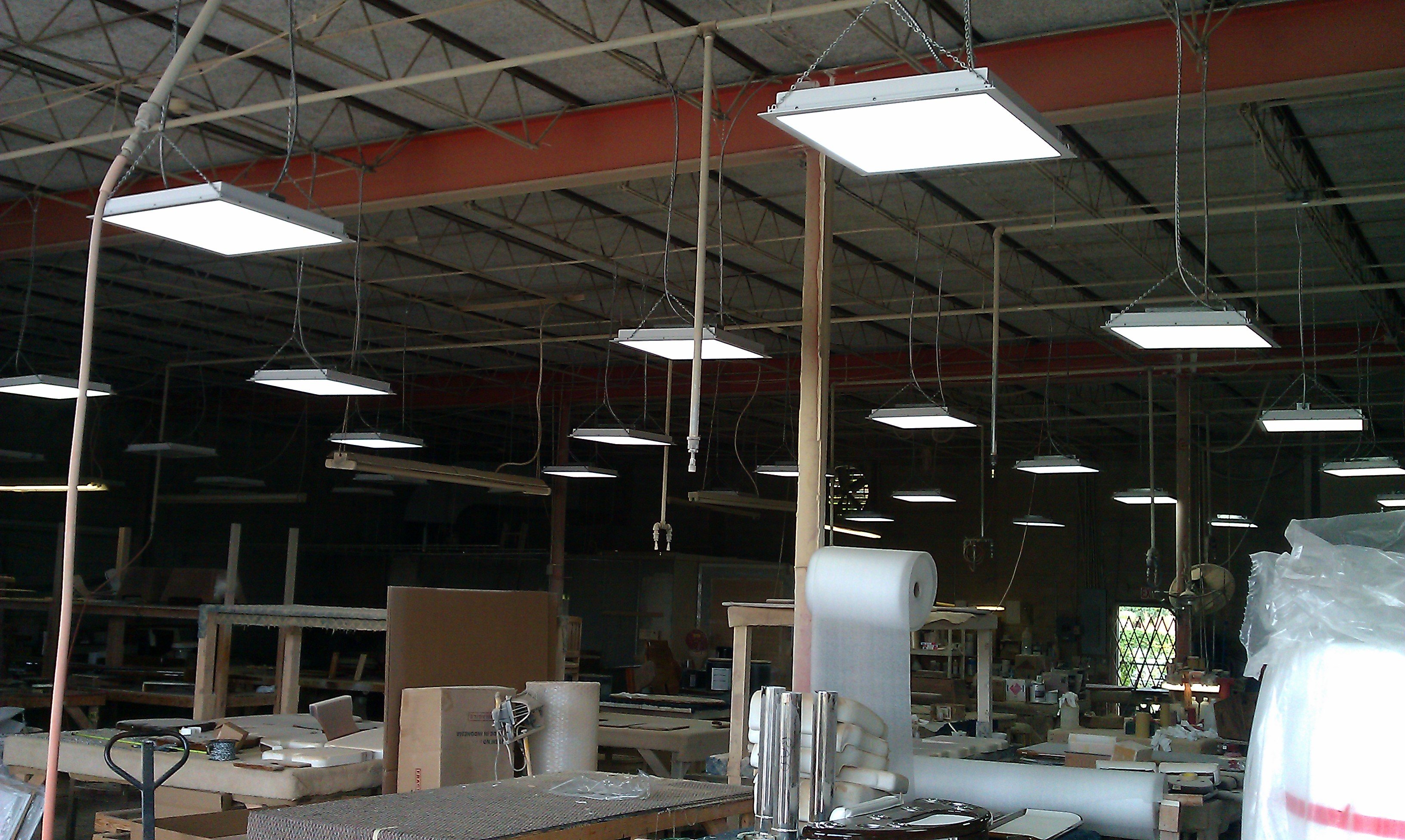10 Reasons To Consider LED Lighting Beyond Energy Savings
Energy Savings Is Important, But Not The Only Reason...
In addition to energy savings, LED products offer other advantages over conventional lighting products.
These advantages include:
- long operating life
- reduced radiated heat
- minimal light loss
- dimmability and controllability
- durability
- safety improvements
- mercury and glass reduction
- enhanced product appearance
- improved color rendition
- good for our bodies
These benefits of each are further discussed below.
1. Long Operating Life

Commercial consumers are generally interested in using a light source that is reliable and lasts a long time. Frequent lamp replacements can be costly from a maintenance perspective and failed lamps can expose businesses to liabilities.
In fact, maintenance savings is one of the primary drivers of market adoption of LED’s in several markets. Presently, LED technology offers operating lives that are over 100 times longer than those of incandescent sources and 20 times longer than that of fluorescent sources.
2. Reduced Radiated Heat
LED conversion efficiency (i.e. efficacy or the LED’s ability to convert more energy to light than heat) has improved dramatically over the last 3 years and will continue to evolve. As a higher proportion of electricity is converted into visible light, a smaller proportion generates waste heat, or what is commonly referred to as “heat gain” in a building.
The reduction in heat radiated into an air conditioned space will reduce the air-conditioning load, providing a commercial user up to 20% more energy savings than what has been calculated in your proposal.
Lower radiated heat equals lower A/C load, equals greater energy savings. Traditional light sources convert most of the power they use into infrared (IR) radiation which also is a source of radiated heat. LED’s do not emit any IR or ultra-violet (UV) light.
3. Minimal Light Loss
LED is a directional light source with superior optical control. We can put the light where it is needed. Conventional light sources generally have uniform emission in all directions, which will results in lower fixtures efficiencies due to the light that is lost, as the light is absorbed or photons/light rays bounce around in the back of the fixture, scattering and never really hit the intended target.
In most applications 40% up to 60% of the light emitted from a fluorescent tube is lost within the fixture and diffuser before it is ever exits the fixture. This is why when the industry simply compares lumens or light output between traditional light sources and LED, it’s not a fair comparison.
LED can more effectively illuminate the space with generally less light. Light emitted from LED light sources is more directional and controlled, meaning fewer photons are trapped within the lighting fixtures and through superior lighting design can direct the light towards its intended target.
4. Dimmability and Controllability
Your fixtures come dimming enabled. All that is needed is a separate dimming circuit to control the fixtures ability to seamlessly dim. LED fixture compatible dimmers must be used. Contact Genesis for a list of compatible dimmers.
These controls can reduce the annual operating hours of the LED system and lead to greater energy savings. Traditional dimmers used in incandescent, halogen or fluorescent systems are not compatible with LED dimmers or dimming systems.
5. Durability
Inherent in our solid state lighting fixtures is the ability of the LED light source to resist vibration and impact. There is also no glass present in our fixture design.
The unit is completely sealed. No dust or unwanted pests will penetrate the fixture. The fixtures light panel is easily cleaned by a damp cloth.
6.Safety Improvements
Your fixtures are UL approved, have power surge circuit protection resistance built-in and are less likely to fail, leading to less downtime. A separate optional emergency battery back-up power supply can also be purchased that guarantees 90 minutes of continuous light just in case of a power outage.
No lead based solder or toxic waste elements are used during manufacturing. LED light sources have been proven to generate less glare, reduce eye strain and increase visual acuity, perception and contrast.
7. Mercury Reduction
LED’s contain no mercury and requires no special handling for disposal. LED fixtures eliminate the need to re-cycle.
Fluorescent and CFL lamps contain mercury, a toxic substance that requires special handling for disposal and pollutes our environment.
CFL’s contain an average of 4 milligrams (mg) of mercury.
8. Enhanced Product Appearance
The light emitted from an LED source has been commonly referred to as “full color spectrum” lighting or usable light. Visible, vibrant light our eyes see and use to enrich our perception of our interior and exterior environments.
As mentioned above, LED does not emit any light in the (IR) infrared or (UV) ultraviolet spectrum. LED will not fade your fabrics, paints, vinyl, signage, etc.
9. Improved Color Rendition
With the absence of UV & IR in the lighting environment saturated colors like orange, purple, red, green, blue and yellow come alive as never before.
LED light better represents sunlight. For instance, a 4000k color temperature specified for use represents what we see outside, on a sunny day, between the hours of 11am and 3pm.
10. Good For Our Bodies
Our bodies need light. Good quality light can positively impact moods, sleep patterns and have other biological and physiological effects.
Poor quality, un-balanced, un-natural light is what we have endured the past 125 years. Research the effects of light and our bodies natural Circadian Rhythms.
At the very least you’ll rest assured knowing you are saving money with every hour of operation and have “made the right choice” for a quality lighting environment.
Learn More About Energy Efficient Lighting...
Related Articles: